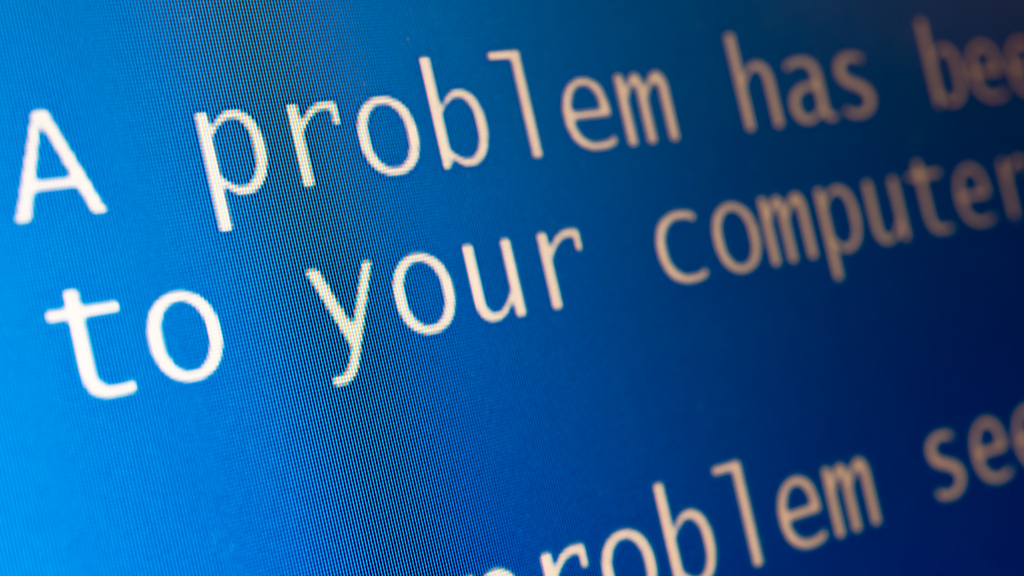Windows 10 sucks – can Linux save us all?
No more blue screens

Sigh. You know, Windows 10 used to be great. Maybe it was because Microsoft could have released almost anything after Windows 8 and it would seem brilliant in comparison, but at the time it seemed like the new operating system had fixed almost all its predecessor’s problems.
No longer did Microsoft force its ugly Metro interface on us, insisting on a big and ugly touch-screen interface for people who don’t have touchscreens. Instead, the good old Start menu was back!
And, while Windows 8 felt like a bloated piece of software that struggled to run on PCs that matched its minimum system requirements, Windows 10 felt like Microsoft had actually tried to make a piece of software that could run on older, or less powerful PCs.
While Microsoft will probably never release a lightweight operating system to compete with the likes of Chrome OS, many of us were pleasantly surprised with how well Windows 10 ran on its minimum specifications. It wasn’t perfect, but it was better than Windows 8.

So, what happened? Why is Windows 10 now such a mess? Recently, Microsoft has released update after update that appear to break more things than they fix. Then, when Microsoft scrambles to release a fix for those new problems, it seems like it introduces even more.
Many of those new problems even result in the notorious Blue Screen of Death. This error screen was once so widespread in earlier versions of Windows, it became iconic. Thought you’d finally seen the last of it with Windows 10? Well, it’s back. With a vengeance.
Now, Windows 10 has such a big install base, that even with plenty of reports of problems, for the majority of users, Windows 10 still works fine. And that’s a lot of people.
Sign up for breaking news, reviews, opinion, top tech deals, and more.
However, even if you’ve not been affected by a dodgy Windows 10 update, the steady stream of news about people who have been affected, and are now staring despondently at a blue screen, can’t help but lessen your confidence in Windows 10. Sure, it works for you now. But is it just a matter of time before Microsoft breaks your PC?

What can you do?
So, what can you do? Stopping Windows 10 from updating is a decent short-term fix. It means you can pause the updates from installing, wait to see if there are any reported problems (and going by Microsoft’s track record, there will be), and then decide whether or not to install it once you’re confident that it won’t impact your PC.
We explain how to stop a Windows 10 update, which takes you through the process. However, stopping Windows 10 updates should only be temporary. Most of the time, these updates include important security fixes, so you don’t want to run an unpatched operating system for too long.
So, maybe it’s time for a more drastic change. Maybe it’s time to leave Windows 10 behind.

Is Linux the answer?
One of the easiest ways to ditch Windows 10 is to get a new MacBook or Mac, which runs macOS, or a Chromebook, which runs Chrome OS.
That, of course, is a pricey option. However, if you want to keep your exciting PC or laptop and move away from Windows, then it’s time to seriously consider Linux.
Linux is an open-source operating system, and it’s incredibly popular. It’s free to download and install (apart from some versions that are for enterprise users) and it runs on any PC that can run Windows 10. In fact, due to it being more lightweight than Windows 10, you should find it runs better than Windows 10.
Perhaps best of all, Linux comes in a wide variety of shapes and sizes. Called distributions, or distros, these different spins of Linux are aimed at different people. There are hardcore distros for Linux experts, as well as beginner distros, and ones that are built for running on old and underpowered hardware.
If you’re new to Linux, then Ubuntu and Mint are the distros to check out, as they are extremely easy to use. Mint in particular is good for Windows migrants as it has a user interface that’s very similar to Windows 10, so you’ll feel right at home.
Thanks to the popularity of Linux, many programs (and an increasing number of games) you use in Windows 10 will have Linux versions. And if not, there are plenty of excellent alternatives. While Microsoft Office doesn’t run on Linux, LibreOffice is a great (free) alternative, for example.
There’s also projects like WINE (Wine Is Not an Emulator) which let you run Windows 10 apps within Linux.
So, there’s plenty of reasons to switch to Linux if Windows 10 is bugging you. While it’s not ideal having to switch operating systems, if Microsoft keeps breaking Windows 10, it will leave many people with no other option – and that may in turn may shock the company into sorting out its mess.
- These are the best Linux distros
- Get the best PC VPN to stay more secure on Windows 10

Matt is TechRadar's Managing Editor for Core Tech, looking after computing and mobile technology. Having written for a number of publications such as PC Plus, PC Format, T3 and Linux Format, there's no aspect of technology that Matt isn't passionate about, especially computing and PC gaming. He’s personally reviewed and used most of the laptops in our best laptops guide - and since joining TechRadar in 2014, he's reviewed over 250 laptops and computing accessories personally.